Page Sections
In Klarity, you represent your organizational structures with Business contexts. A business context can reflect your organization structure from many different points of view and, for example, can show costs and assignments. Further examples of possible business contexts are: charging units, office locations, or department names. In Klarity, you can create, and add, as many business contexts as you need.
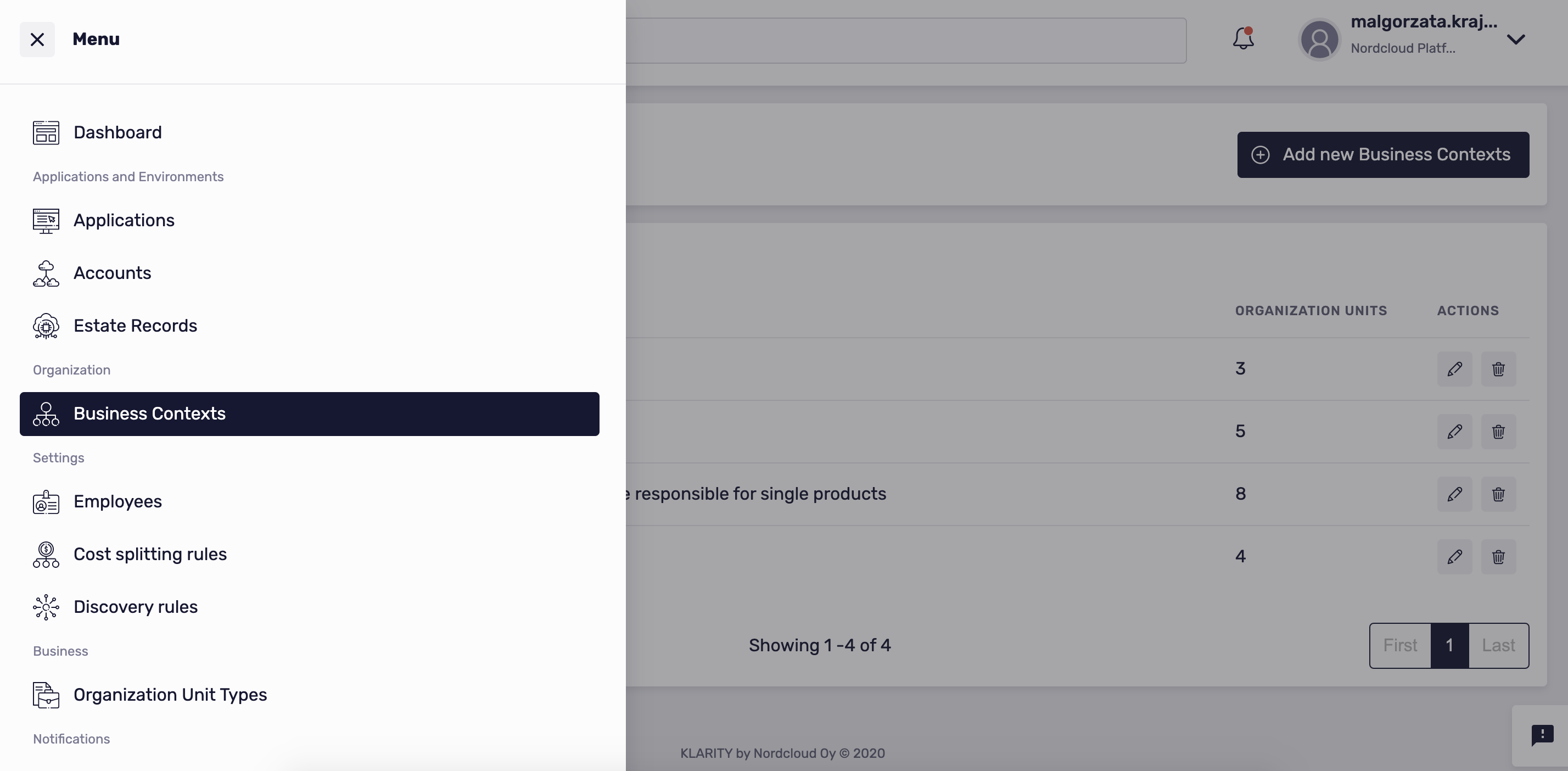
In Business contexts, you see the description of each business context, and information about how many organizational units it contains. You can edit any existing information about a business context. You can also delete any business context.
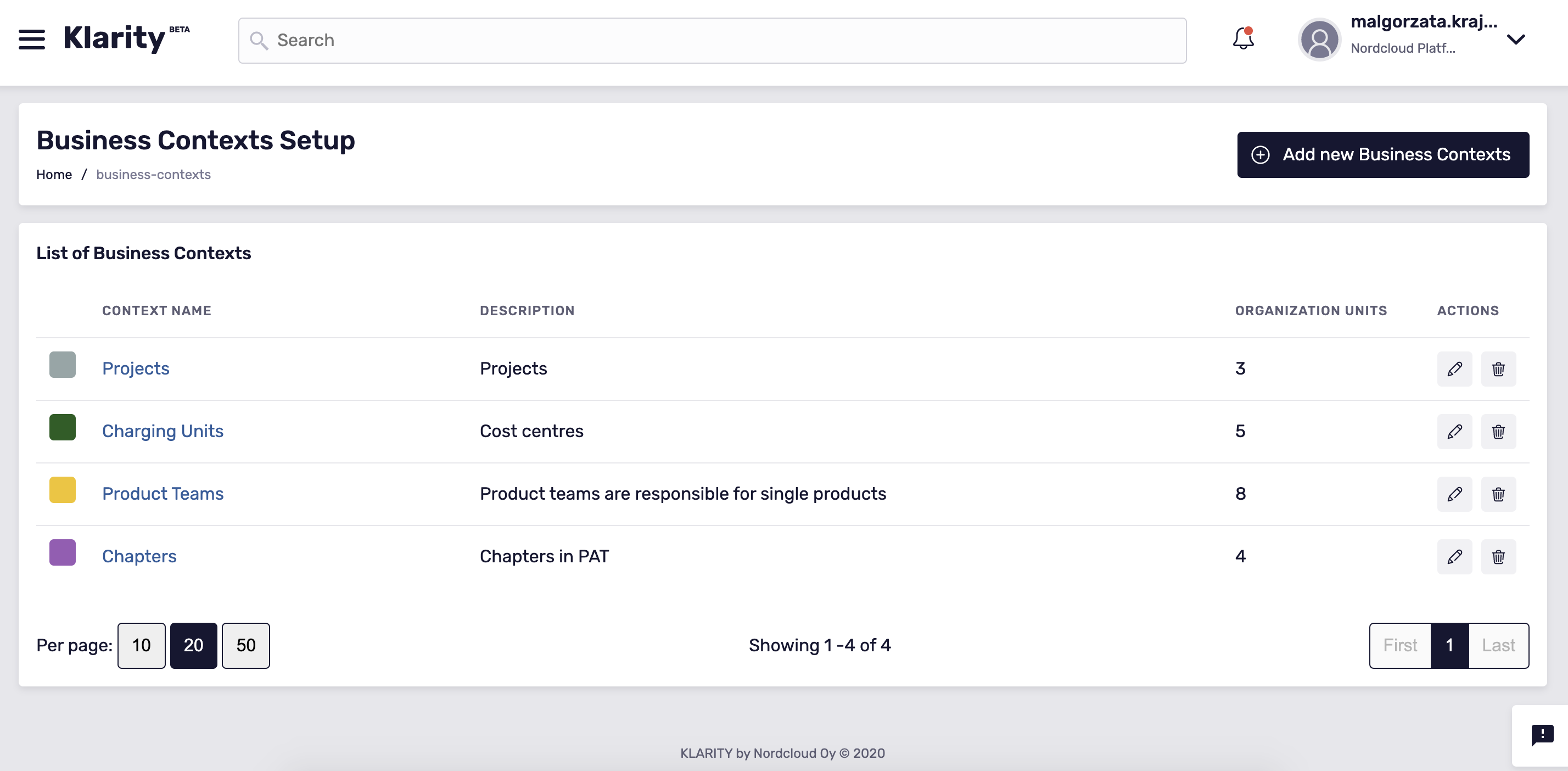
Adding new business context
To add a new business context, click on Add new Business Contexts:

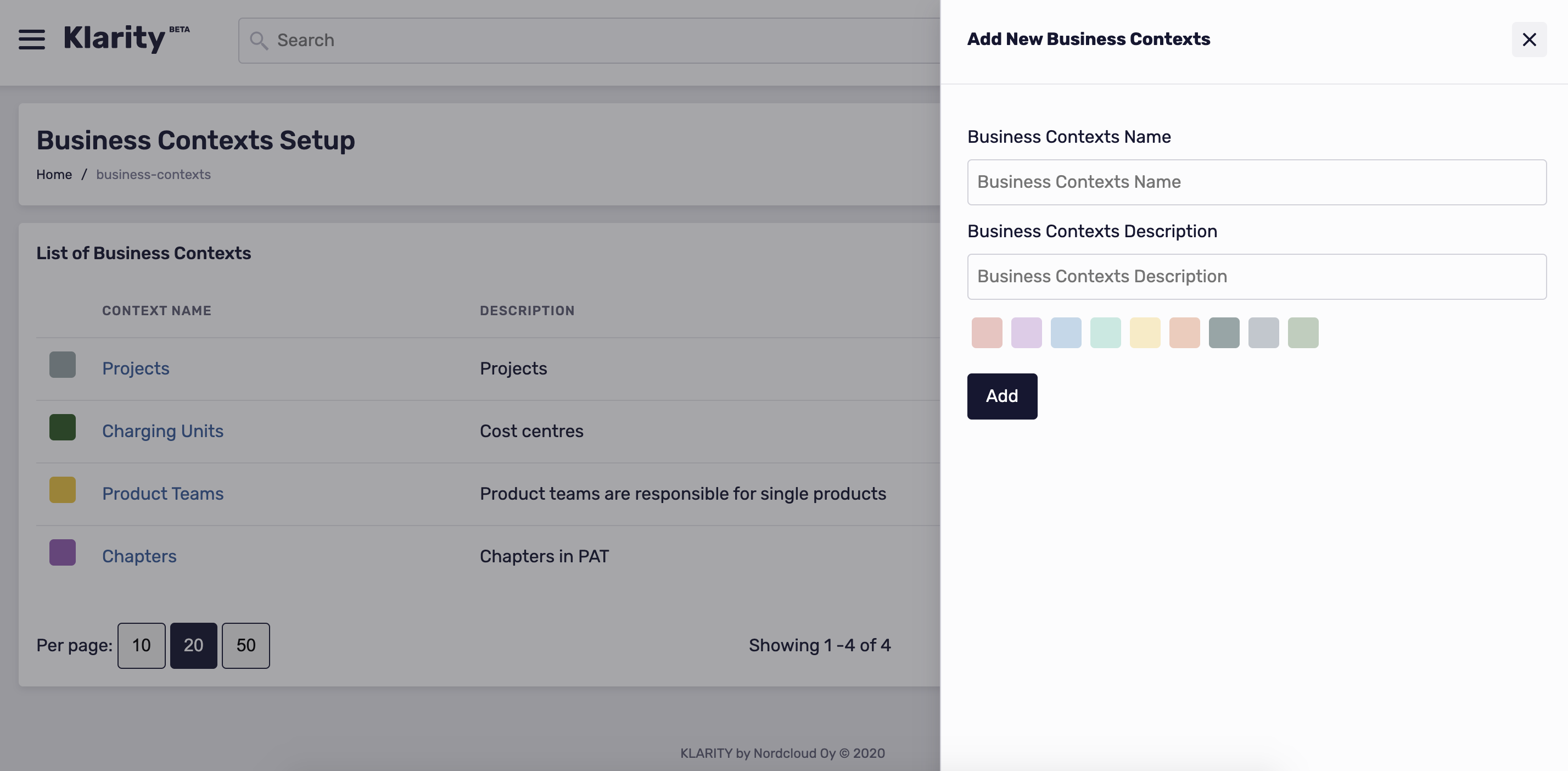
Defining organizational units
In Klarity, an organizational unit is known as an organization unit. In each business context, you can define your own organization units:

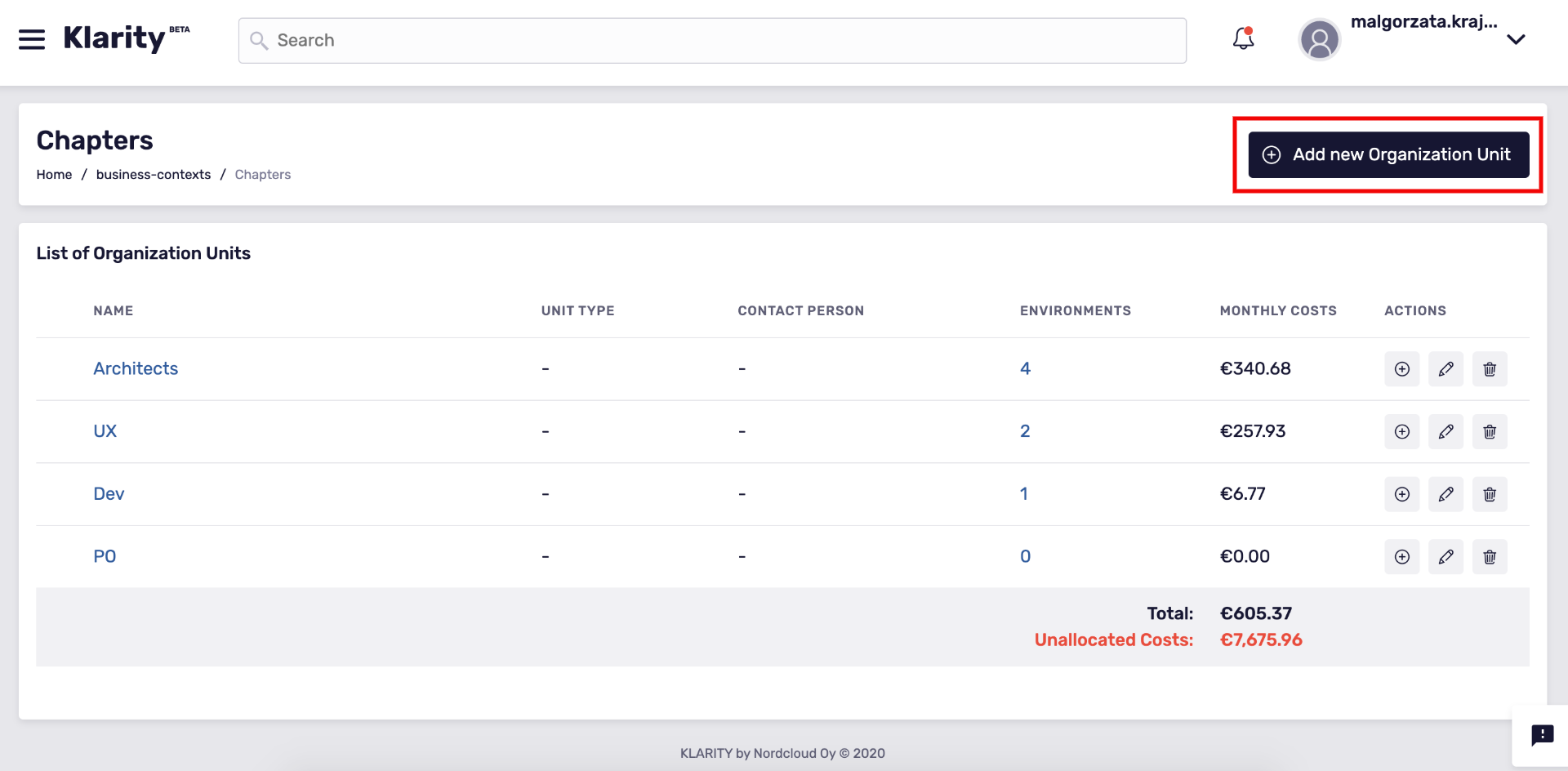
You can also add an organization unit inside another organization unit, and therefore create a relationship between the two units, as below:
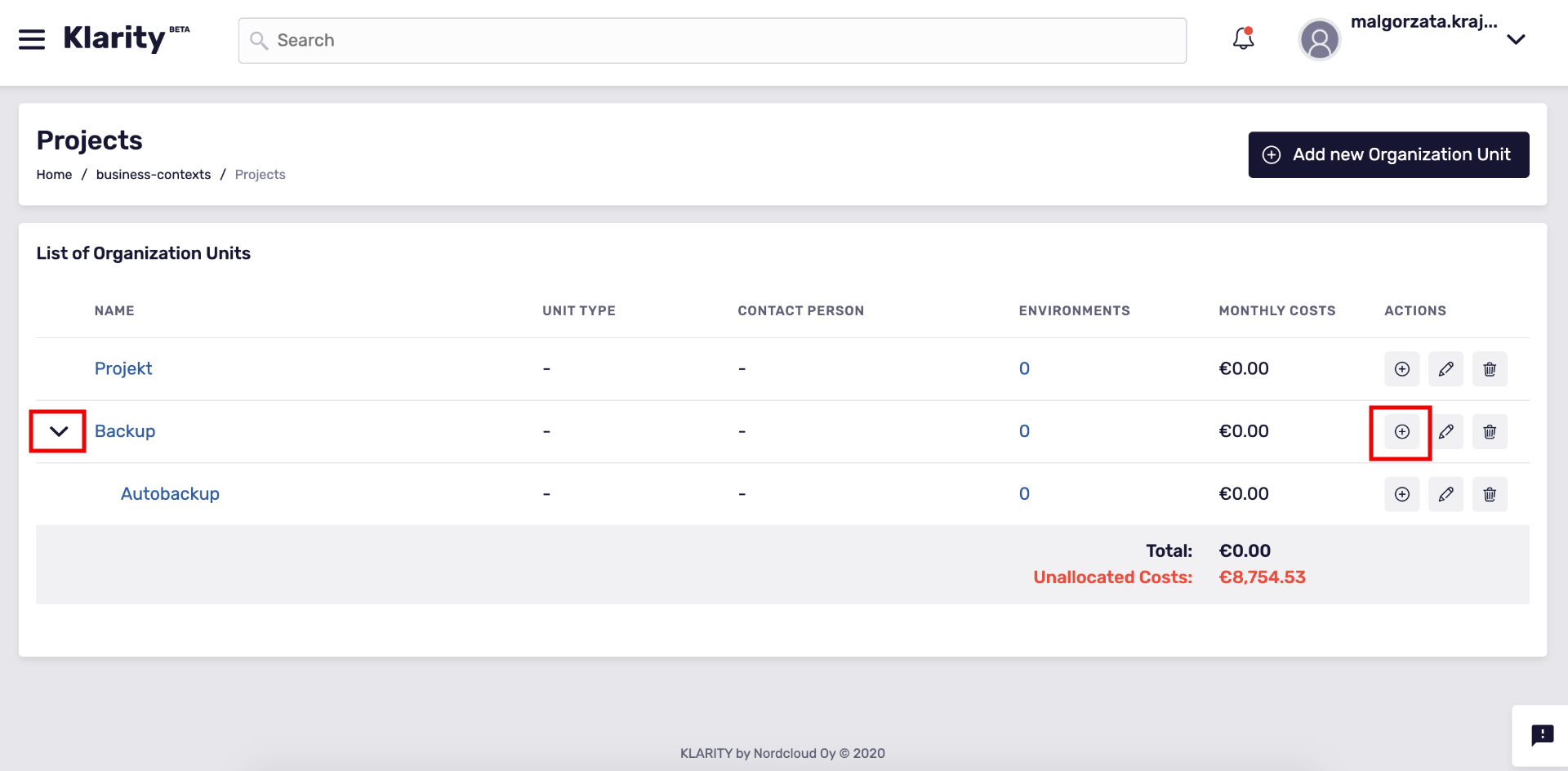
When your organization unit is defined, you can assign environments to the unit, and then gain information about the costs of this organization unit.
Attaching environment
To assign an environment to an organization unit, go to the settings of environment that you want to assign. You will find the environment either on the list of applications, or you can search for it with the search mechanism (in search, type the name of the environment, but also click on the Environment tab to narrow down the search as quickly as possible):

Next, click on one of the search results the relevant Environment details.

In Environment details, go to Environment settings:
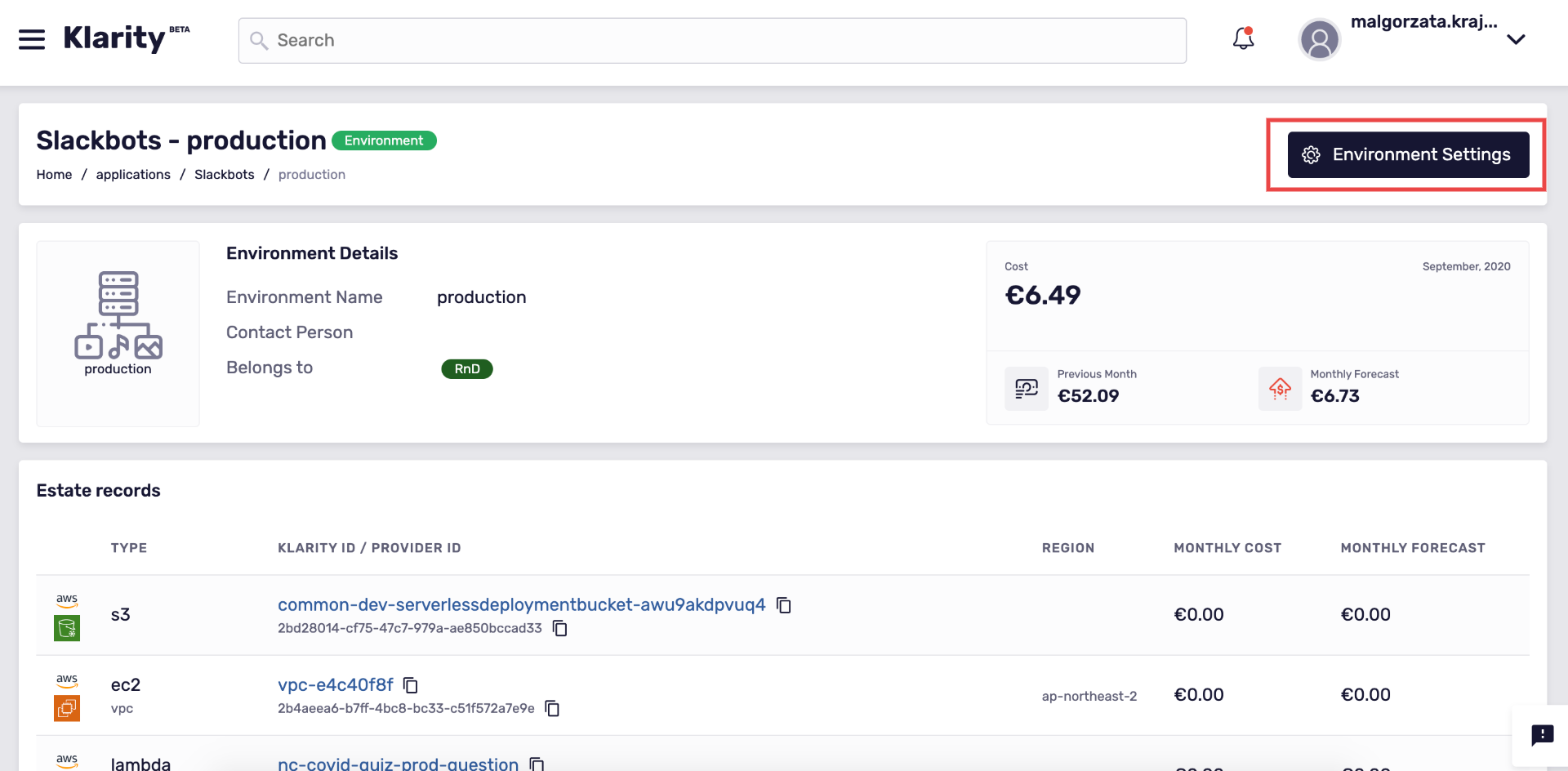
In Environment settings, go to the Basic information tab.

To add this environment to the organizational unit, click Add organization unit:


Organization unit types
If you want to organize your organization units in a better, more structured fashion, you can use organization unit types:

You can define as many organization unit types as you need:


After you have defined at least one organization unit type, when adding a new organization unit (or editing an existing organization unit), you can refer to that organization unit type:

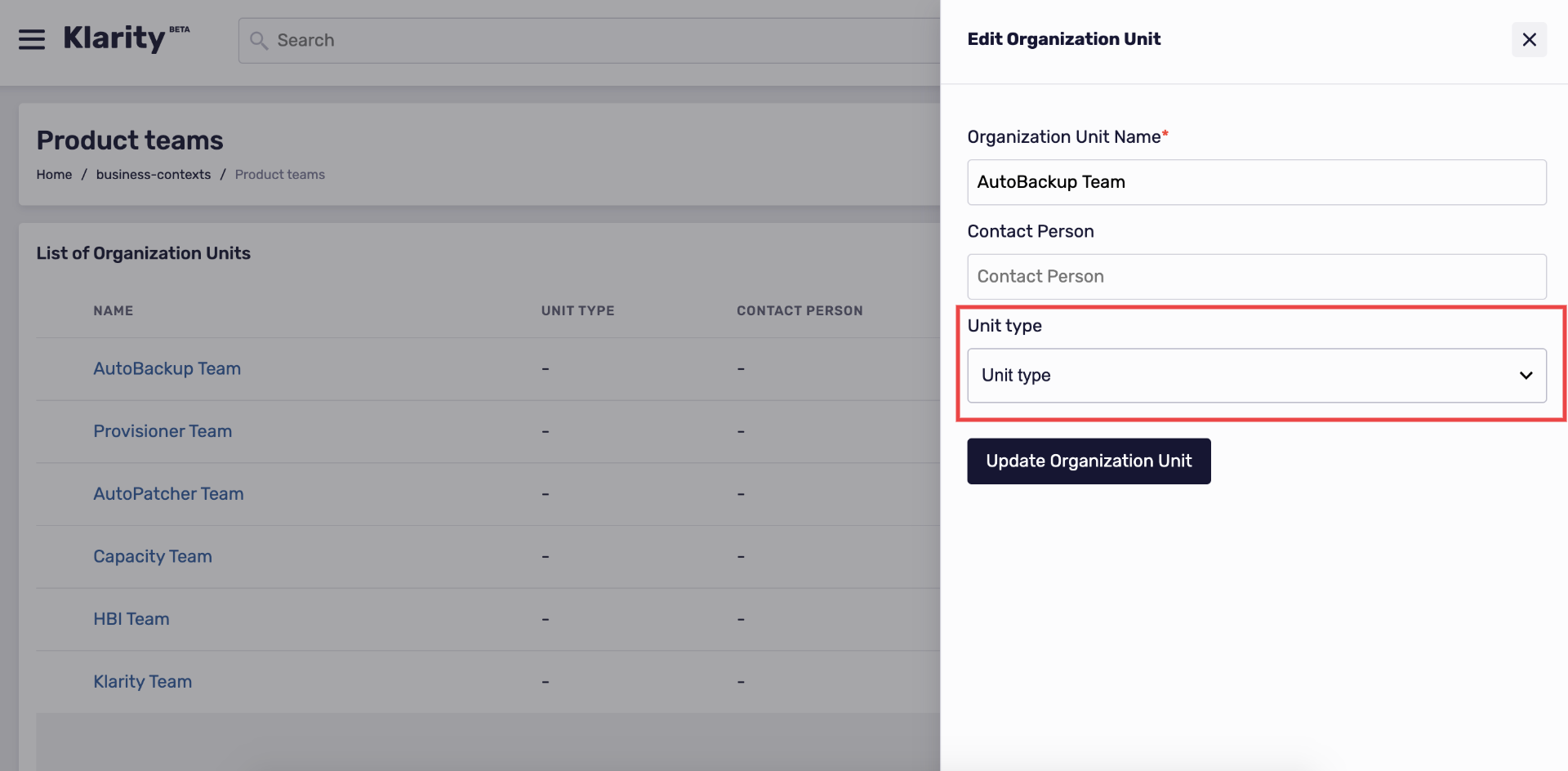
Organization unit budget
Intro
In Klarity, you can easily manage and track your budget at the organizational unit level for the current, past, and upcoming years. Klarity gives you budget recommendations based on your past spending. You'll also see notifications when the total environmental and sub-budgets exceed the Organizational Unit budget. The budget feature is available in every organizational unit.
Creating a budget
To add a budget, you need select one of two options:

Create a Budget Manually: Enter the expected yearly Budget (the value will be divided equally into 12 months).

Create Budget Automatically: There are several ways Klarity calculates budgets automatically.
- The values of your budget will be created based on the costs available in Klarity for the current year. If you don't have values for the whole year (as the year is not over yet), a linear forecast will be used to fill in the missing months and make a new budget.
- For the previous year: a. Suppose Klarity has data for the entire year. In that case, the previous monthly spend values become the new monthly budget values. b. You have partly billing data (e.g. for the second half of the previous year) and would like to create a new budget. Klarity will use the values from the year's second half to fill in the missing months using an arithmetic mean.
Note: - After generating the budget, it is necessary to verify it (it is possible to modify it), and then approve it.

Edit budget
The editing feature is available for each added budget. To enter the budget editing mode, click Edit Budget, and then you can modify it.

Yearly Budget- It is possible to modify the yearly budget after editing, which will proportionally change all values of the monthly budgets (for the selected year).

Growth Rate- You can increase and decrease your budget by a certain percentage. For example, if your company decides to increase its budget by 20%, enter 20% in the growth rate, and vice-versa -20% will decrease the budget by 20%. You'll see the yearly budget changed by the growth rate. Then click on apply to Months, which will update the monthly budget values.

Edit monthly budgets individually- In edit mode, you can modify the monthly budgets, and the quarterly total will be updated automatically.

Generate a new budget- create your new yearly budget based on the previous year’s spend. This works the same way asCreate Budget Automatically

Saving the modified budget- To save the modified budget, click on the Save budget button. Then verify the change in the yearly budget before and after the change, and if it is correct, click Save to save the new budget.

View budget- When it comes to seeing your budgets, Klarity gives you a few options. For previous, current, and future years' you can see the monthly budget values and compare them to last year's spending. In the future year view, when you select "Compare with Previous Year Spend," you will see some of the month's spending as a forecast.
